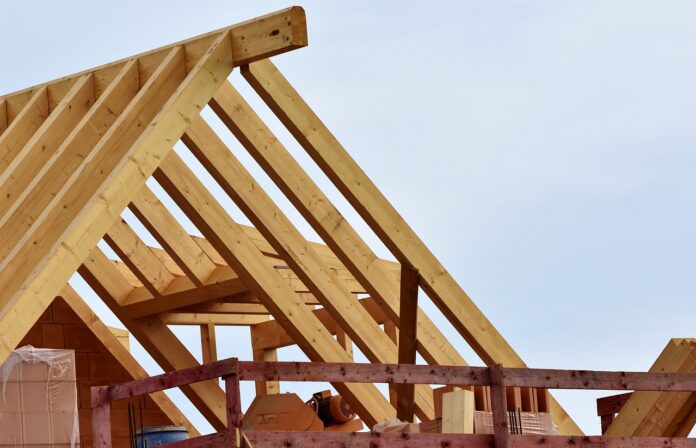Embarking on a roof installation project can be daunting, but with the right approach, your new roof will not only protect your home but also enhance its curb appeal. Think of it as a capstone to your personal haven – this post is here to guide you through the essential steps to ensure a smooth and successful installation.
Hire a Reputable Contractor
A good contractor is critical in your roof installation process – they bring expertise, experience, and efficiency to the project. They possess an intimate understanding of the materials and their suitability to your climate, ensuring your roof is adept at withstanding local weather conditions. This is especially important for new roof installations, as the right materials and techniques will significantly extend its lifespan. When choosing a contractor, look for one with solid experience and a good reputation in your community.
Moreover, a reputable professional typically is meticulous about adherence to building codes, reducing the risk of costly compliance issues down the line. They also manage the project timeline and budget, coordinating the procuring of materials and the workforce needed to stay on schedule and avoid overruns. Importantly, their craftsmanship ensures a high-quality installation that lasts. Lastly, a credible contractor will provide warranties for the work completed, affording you peace of mind that your investment is protected.
Get Proper Permits
Before any work begins, it’s crucial to secure all necessary permits. These permits are instrumental as they ensure your roof installation complies with local building codes and regulations, which are designed for safety and standardization across your municipality. Skipping this step could not only stall your project but also lead to penalties and potentially costly legal complications.
Permits are a formal way to guarantee that the structure of your new roof meets the required specifications for sustainability and durability in the face of environmental conditions. Moreover, having the proper permits can help maintain the value of your home, as future potential buyers will demand proof of compliance for any major renovations made to the property.
Choose Quality Materials
Whenever you’re working on anything on your house, it’s important to pick the best materials and this goes double for roofing. Here are some options you can pick from:
- Asphalt shingles
- Metal roofing
- Wood shingles or shakes
- Clay or concrete tiles
- Slate
- Synthetic roofing materials
- Underlayment
- Flashing
- Roofing adhesives and sealants
- Fasteners
Quality materials for your roof are crucial due to their long-term durability, resistance to inclement weather, and energy efficiency. Superior resources can withstand extreme temperatures, resist wear from the elements, and provide better insulation. This not only prolongs the life of your roof but also reduces repair costs and enhances the overall energy conservation of your home, making it a wise investment.
Ensure Proper Ventilation
Proper ventilation curbs the build-up of heat and moisture in the attic, which can lead to a multitude of problems, such as warped decking, mold growth, and diminished insulation effectiveness. In colder climates, adequate ventilation prevents ice damming – the formation of ice on the eaves that can damage roofing materials. It ensures a balanced airflow, helping regulate temperatures and aiding in a more comfortable living environment.
This temperature regulation contributes to energy efficiency, potentially reducing heating and cooling costs. Additionally, proper air circulation is usually a requirement for roofing material warranties, making it not only a functional imperative but also a financial consideration in protecting your investment.
Remove Old Roofing Materials
While it may be tempting to overlay new roofing materials on top of old ones, removing the existing layers is crucial for several reasons. First and foremost, stripping the old materials allows for a thorough inspection of the decking and structure below. This is vital for uncovering hidden damages or rot that could compromise your roof’s integrity.
Additionally, removal prevents the new roof from bearing excess weight which can lead to structural issues. It also ensures a clean, even base for the new materials, resulting in a better installation with a longer lifespan. Lastly, disposing of old shingles ensures that any warranty on your new roof will be valid, as most manufacturers require installation on a fresh surface.
Inspect and Repair Substrate
After removing old roofing materials, it’s crucial to inspect the substrate, the foundational layer that supports the roofing system. If the substrate is damaged or degraded, it can compromise the integrity of the new roof, leading to structural issues and a shorter lifespan. Repairing any problems with the substrate ensures a solid and even base, preventing future water penetration and improving overall installation quality.
This step is pivotal for avoiding costly rework, as hidden damage left unchecked could result in significant repairs down the line. By addressing substrate issues before installing new roofing materials, you lay the groundwork for a roof that is both durable and secure.
As you embark on your new roofing project, remember to plan with care, from selecting quality materials to ensuring proper ventilation. By following these steps, you’ll not only safeguard your home but boost its aesthetic appeal and value. Your diligence will culminate in a durable, cost-effective roof you can rely on for years to come.


